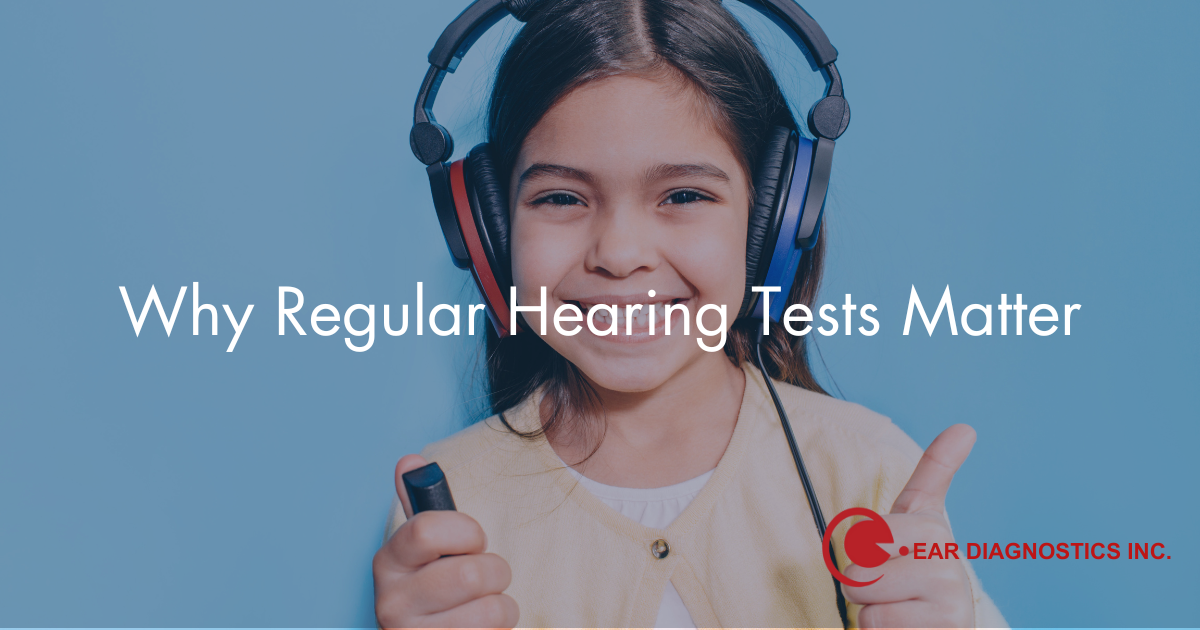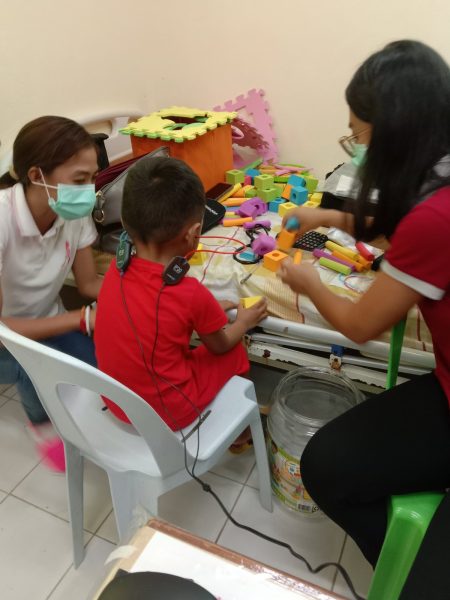Behavioural test methods include Visual Reinforcement Audiometry (VRA), Conditioned Play Audiometry (CPA), and Conventional Audiometry. The goal of all testing is to determine the softest levels of tones and speech that a child can hear. The softest sound a child can hear 50 percent of the time, is called a “threshold”.
- Visual Reinforcement Audiometry (VRA): Generally done in children approximately 5 months to two years old. The child sits on a parent’s lap in the test booth, and is trained to look towards (orient to) a sound presented via a speaker. When the child looks toward the correct speaker, he/she is rewarded by briefly switching on a lighted, moving toy. Using this technique, thresholds can be reliably measured for tones of various frequencies (pitch) and for speech. Many children can be tested with small earphones placed in their ears, using the same technique.
- Conditioned Play Audiometry (CPA): Generally done in children approximately two to five years old. The child is trained to perform a play activity each time a sound is heard. Activities might include putting a block in a bucket, placing a peg in a hole, etc. Using this technique, thresholds can be reliably measured for tones of various frequencies. Speech thresholds are typically obtained by having the child identify pictures and body parts.








